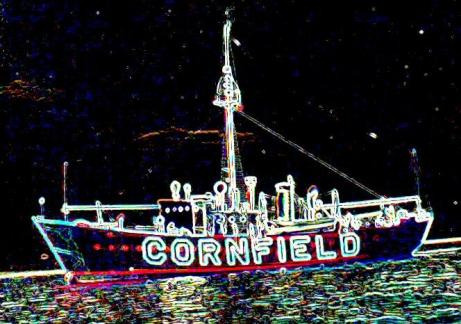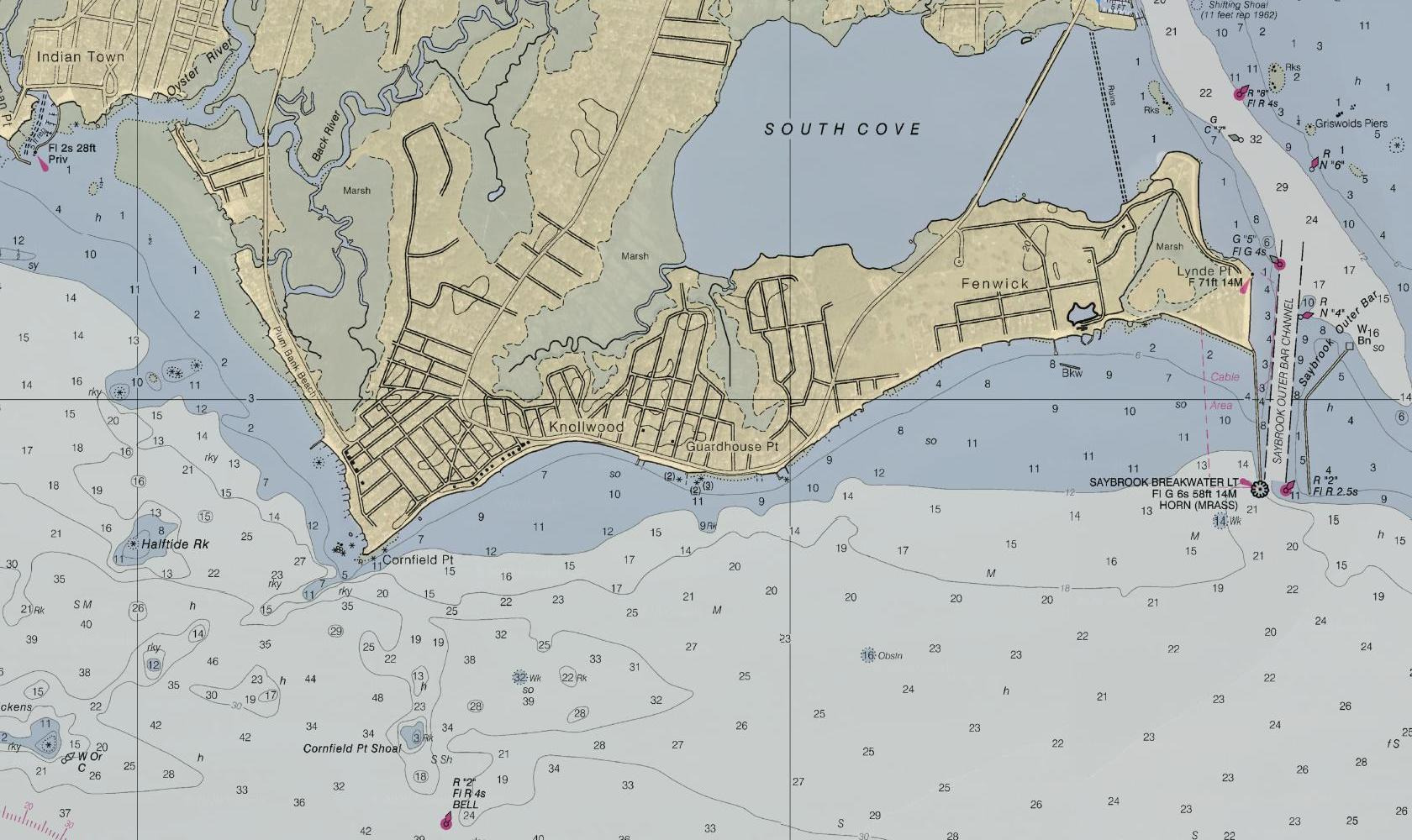History
Cornfield Point - A Brief Historical Overview
| Related Articles |
| Historic Saybrook Sign Returns Home Harbor News, May 20, 2021 |
| For more information on Cornfield Point and Old Saybrook visit the Old Saybrook Historical Society |
Cornfield Point - From Corn To Cottages
No sooner had colonists begun constructing the first fortification in New England, than they selected a gently rolling site overlooking the sea for planting corn. The site was selected by Lt. Lion Gardiner, a skilled engineer and said to be "honest, intelligent and resolute, (and) as a soldier, brave, able and generous."
Gardiner and perhaps 18 men, women and children arrived at the mouth of the Connecticut River in November 1635. He completed the fort at Saybrook Point the following summer and built a windmill to grind corn the colonists had planted that spring at the place he called Cornfield Point. The following year (1637) six acres of corn were cultivated under the watchful eye of armed men at Cornfield Point.
In 1639 George Fenwick took over as governor and took possession of Cornfield Point. When he died in 1657 the land went to his sister Elizabeth, wife of Captain John Cullick. Elizabeth bequeathed the land to her daughter, also named Elizabeth, in 1683. That same year Elizabeth and her husband, Benjamin Batten, sold the land to Simon Lynde who deeded it to his son, Nathaniel Lynde. Eventually the area would become three farms owned by the Jarvis, Hart and Lynde families.
By 1904 the Jarvis Farm was owned by Elizabeth Colt Jarvis Beach who with her husband George built a large residence later known as "Hartlands." The building was costly to maintain and being unable to sell it, the Beach's leased it in 1918 to the Army for $1 a year. Some 40 officers and a stock pile of weapons were placed there.
 After the war Hartlands and 600 acres were put up for sale. Unable to sell, Mrs. Beach forfeited the land to the Hartford Land and Mortgage Trust Co. to pay her $35,000 debt. The remaining 25 acres and her mansion were sold to Gilbert Pratt of New York City. Soon after (1921) Pratt sold his 25 acres to James Jay Smith and Company who divided the land into 550 lots. He then marketed the 40' by 100' lots as a restricted "cottage colony." For ten per cent down and four years to pay, they assured prospective buyers "plots will be sold only to genuine Americans."
After the war Hartlands and 600 acres were put up for sale. Unable to sell, Mrs. Beach forfeited the land to the Hartford Land and Mortgage Trust Co. to pay her $35,000 debt. The remaining 25 acres and her mansion were sold to Gilbert Pratt of New York City. Soon after (1921) Pratt sold his 25 acres to James Jay Smith and Company who divided the land into 550 lots. He then marketed the 40' by 100' lots as a restricted "cottage colony." For ten per cent down and four years to pay, they assured prospective buyers "plots will be sold only to genuine Americans."
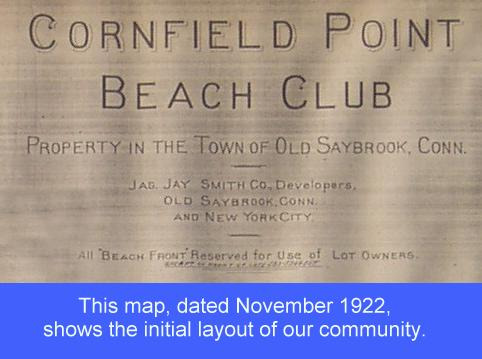
Today, Hartlands, or as it is better know, the Castle, remains the oldest building on Cornfield Point and listed in the state register of historic places. A few buildings in the "cottage colony" date to the 1920s and 1930s but most were originally constructed during the building boom of the 1960s. A large number have been renovated and made into year-round residences.
__________
Abridged from an article by Tedd Levy in the ShoreLineTimes on August 4, 2011.
Castle Inn At Cornfield Point
The former Castle Inn at Cornfield Point, a hotel for visiting celebrities in the 1950s, stands out along Old Saybrook's coast: a grand, stone mansion with a bright orange roof looming over Long Island Sound and the shingled cottages that surround it.
Designed to look like a Newport, R.I., mansion, the "summer house" was built on open farmland by insurance millionaire George Jarvis Beach and his wife, Elizabeth, niece of Samuel Colt, the gun manufacturer. Beach spent $350,000 on its construction by hundreds of local masons using local beach stone. Completed in 1908, the estate was named Hartlands, after Gen. William Hart, a relative of Elizabeth's and former owner of the property.
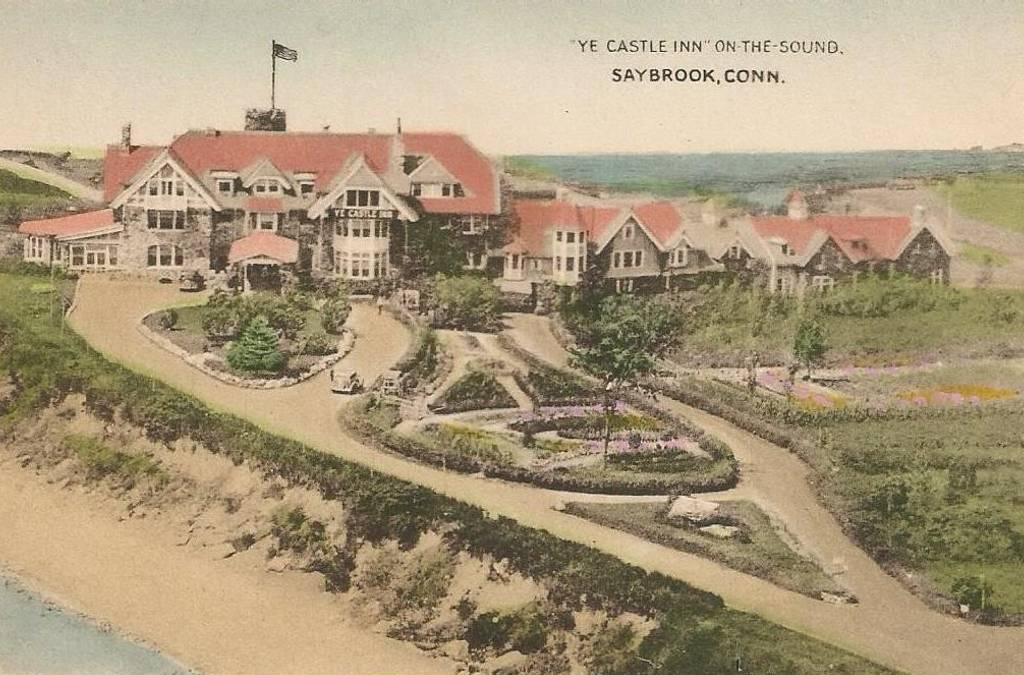

Maintaining the huge home proved to be a financial burden. To offset costs, Beach leased the building and surrounding property to the military during World War I. After Beach died, Gilbert Pratt of New York City bought the property and sold much of the surrounding 400 acres to developers, who transformed the area into a neighborhood of beach cottages.
In 1923, Otto Lindbergh, the uncle of aviator Charles Lindbergh, bought the castle for $75,000 and turned the private residence into Ye Castle Inn, an upscale hotel and restaurant that often hosted well-known actors starring in performances at the nearby Ivoryton Playhouse, including Ethel Barrymore, Helen Hayes, Clark Gable and Charlie Chaplin.
Maria Foss-Rand and her husband, Wayne Rand, discovered the vacant structure in 2006. Others had designs on the castle, too, and there was talk of tearing it down to build waterfront condos. Luckily the Rands acquired the building and began a major restoration project. Today, the "Castle", as it's known locally, is their private residence.
__________
Abridged from an article by Sahrah Cody in the Hartford Magazine on October 25, 2014.
The Cornfield Lightship
Storms, wind, fog, ice, shifting sands make normally calm Long Island Sound surprisingly treacherous for commercial shipping and pleasure boats. This was recognized many years ago at a point known as the Long Sand Shoal off Cornfield Point in Old Saybrook. To guide ships past this sand bank, a lightship with a fixed white reflector light and a fog signal with an alternating bell and horn was first stationed there in 1856.
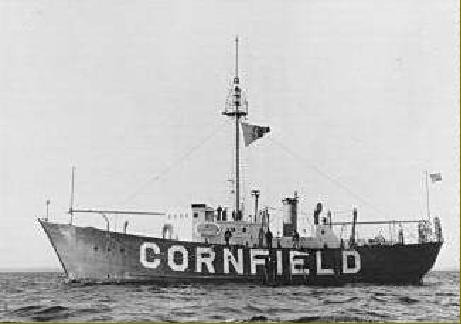
Over the next 101 years, until Nov. 24, 1957, several "Cornfield Lightships" were stationed here. The last Cornfield Lightship - the LV 118 - was an icon for passing boats and land-based strollers. When it ended service, its blinking white light and fog horn warning maritime travelers were replaced by radio beacons on Faulkner's Island and at Saybrook Point, and by a series of buoys with lights and sounding devices.
The last light vessel station at Cornfield Point began service on April 25, 1939, replacing her predecessor who was battered by the Hurricane of 1938. She was the newest of all lightships and possessed the most modern equipment. Painted red, as were all lightships, she was named for the shoal on which she would be stationed, Cornfield Point. After nearly 20 years at Cornfield Point, LV 118 was moved to Cross Rip near Martha's Vineyard.
__________
Abridged from an article by Tedd Levy in the ShoreLineTimes on August 5, 2015.



